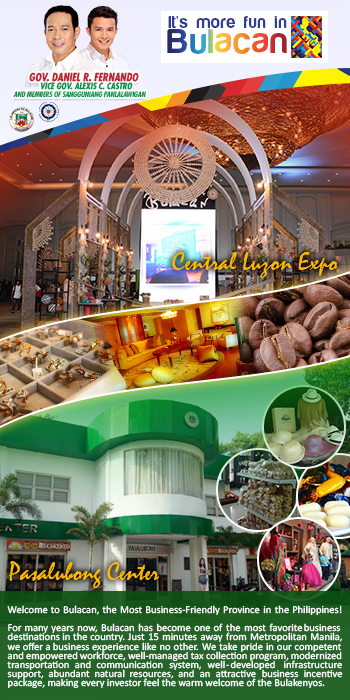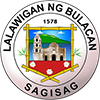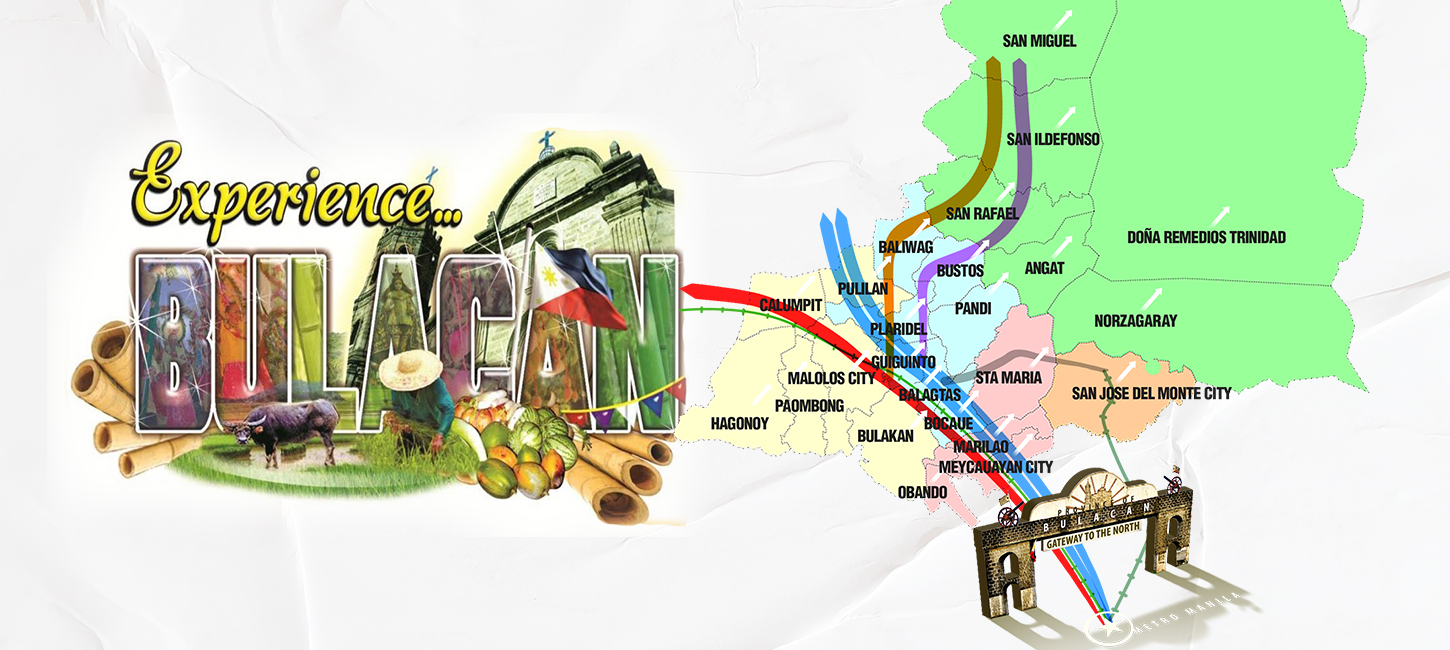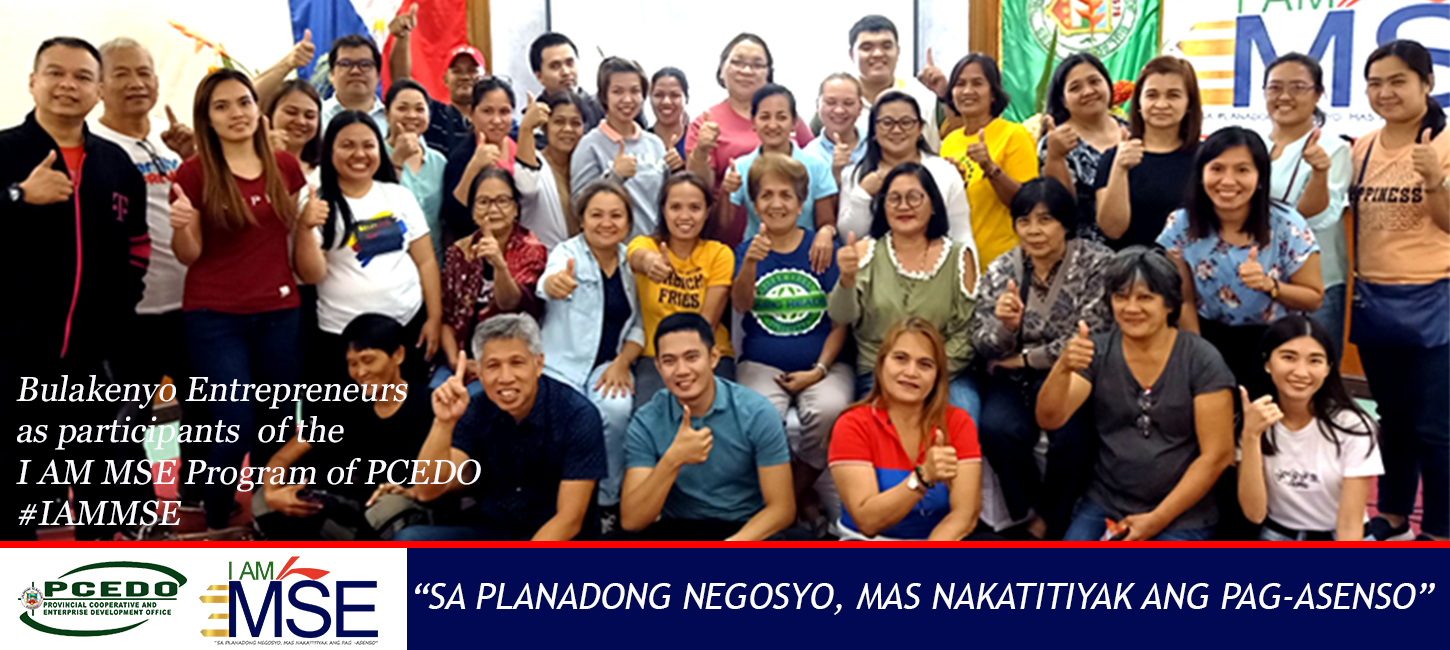Major Industries
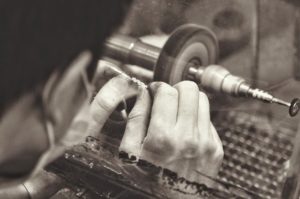
- Industry History
The Philippine jewelry-making trade has been in existence since the early 16th century. Historical records indicate that jewelry-making dates back to the late Stone Age as evidenced by bracelets, pendants and beads from that era. It is believed that skill in making jewelry has been acquired the early Filipinos from their Asian neighbors like the Chinese.
Traditionally, jewelry-making is a home based industry intended to be a source of livelihood for the family. It has become an industry worthy of government attention and support. Given proper support, the industry can contribute to national economic development by increasing the sector's export receipts and maximizing the country's position as a top producer of gold.
II. Industry Profile
Sub-sectors in the jewelry industry
Two sub-sectors comprise the Philippine Jewelry Industry. These are the fine jewelry sub-sector and the costume jewelry sub-sector. The Philippine fine jewelry industry is engaged in the production of two major product categories, namely:
precious metal jewelry; and
pearls, precious and semi-precious stones.
Precious metal jewelry refers to ornaments made of gold and silver that may or may not be mounted with gemstones. Precious metal jewelry can be in the form of rings, earrings, necklaces, bracelets, brooches, pendants, tie-pins cuff links; and decorative items such as spoons, forks; and office items such as pen and paper holders.
Precious metal jewelry made of gold is the major product of the Philippines. Silver jewelry comprise a smaller portion of the business but is steadily increasing.
Pearls, precious stones and semi-precious stones are unworked or worked pearls, cut and polished diamonds and colored gemstones such as emerald, rubies and sapphires in loose form. They vary according to size, color, cut, clarity and luster as in the case of pearls. Precious stones are defined as diamonds, emerald, rubies and sapphires with some addition of pearls. All other gems are considered as semi-precious.
Notwithstanding the availability of raw materials and the capability of local manufacturers to meet local demand, imported jewelry items still abound in the local market. Usually, these jewelry items are made of gold coming from Italy, Thailand, Singapore and Hong Kong.
No official statistics as to the size of the domestic market for jewelry exist. There is also no reliable data on how much of the locally-available jewelry are made domestically or originated from foreign sources. In 1994, De Beers places the Philippine diamond jewelry market at US $62 million. If it is safely assumed that 50% of all jewelry are made with diamonds while the other half are gold and silver set with other stones, then the market size is estimated to be around US$120 million. This can be higher considering that diamond jewelry accounts for only 20-30% of the total jewelry market In this case, the market size for jewelry in the Philippines could be as high as US$ 200 million.
There are six areas in the country where majority of jewelry manufacturing firms are located and these are Benguet, Metro Manila, Cebu, Davao, the Caraga Region, and Bulacan. The jewelry industry in the Philippines is a fragmented one composed of cottage-type small firms with little investments in new technology like modern tools and equipment.
In Bulacan, jewelry making is concentrated in the town of Meycauayan. There are about 2,000 jewelry manufacturers in the province. A local association, the Meycauayan Jewelry Industry Association, Inc. (MJIA), was formed in 1985 to oversee and assume the lead role in the development of the jewelry industry in the province. The MJIA has grown from an original membership of 37 to the current 106.
III. Export Performance and Potential
In 1994, the Philippine exported a total $13 million worth of jewelry products. However, total world demand for jewelry products during the same year was a high $18 billion. Philippine ex[port during the year accounted for only 0.07 percent of total world demand. The comparative advantages of the local jewelry industry, therefore, was not maximized as the local industry performed below capacity in so far as the availability of gold and workers (around 100,000 at that time) is concerned.
Export earnings of the industry increased from $1.74 million in 1984 to $10.9 million in 1996, reflecting an annual growth rate of 30%. The table below shows the industry's historical export performance.
IV. Industry Characteristics
The Philippine jewelry industry is a fragmented industry composed of around 10,000 cottage-type firms. Majority of manufacturers are small, 5 -10 - person operations with minimal investment in modern tools and equipment. Only a few dozen of these firms have more than 50 workers.
Only a few of the firms in the industry are corporations as majority are single proprietorship. Most of the large firms are family-owned. Foreign equity which is considered minimal comes mostly from USA, Italy, and Switzerland.
Most jewelry manufacturing firms are located in Metro Manila, Bulacan, Davao, Cebu, Caraga Region, Benguet Province (Baguio).
Only the few firms who have invested in modern tools and equipment are exporting their products. Regular exporters number around 25.
Board of Investments (BOI) registered exporters account for around 505 of the exports. The leading exporter is Fralpa Manila (formerly Midasco), a Swiss-owned firm.
A. Factor Characteristics
Raw Materials
Gold is the major raw material used in the jewelry industry. Other materials used include silver and precious and semiprecious stones. Gold, silver and some semi-precious stones are locally available.
The Philippines has an abundant supply of gold as it is ranked number fourteen in the list of the world's top gold producers with an output of 28.4 tons in 1995. The country is also ranked as Asia's thrid largest gold producer. The gold production performance is expected to increase with the implementation of the Mining Act that allows firms with 100% capitalization to venture into mineral exploration.
Sources of gold for jewelry production include the Central Bank which sells 24 carat gold in grains and thin sheets with selling prices based on the daily LME price plus an estimated 2% to 3% processing fee. Gold is also available from local miners and/or small refiners, although quality of the material coming from these sources cannot be assured.
Silver is common in Baguio while pearls are abundant in Southern Philippines. Precious stones are yet to be discovered in the Philippines while semi-precious stones such as jade and onyx are known to exist although sources are largely undeveloped due to lack of state of the art technology.
With these raw materials in the country, manufacturing of jewelry may be done without importation.
Equipment and Technology
The technology utilized in the jewelry industry is generally labor-intensive since production is manual and volume requirements are low. Most tools are hand operated although a few local jewelers have already acquired casting machines wax injectors which characterize a higher volume of production.
B. Regulations and other government interventions
The Philippine Export Development Plan prepared through the initiative of the Department of Trade and Industry (DTI) included fine jewelry among the original fourteen (14) export winners with the end view of harnessing the industry's full export potential.
Republic Act 8502 otherwise known as the Jewelry Industry Development Act of 1998 features tax and duty relief to jewelry manufacturing including importation of gemstones and raw materials components and equipment.
In line with the government's thrust to promote technology upgrading, metal working equipment were given zero tariff rates. Jewelry firms may also rent the modem equipment found in common service facilities for their own production.
Among the salient features of R.A. 8502 are the following:
Entitlement to a zero duty on imported raw materials which include precious metals, loose gems, gemstones, jewelry parts, accessories and supplies;
Exemption from the imposition of excise tax;
Entitlement to zero duty on imported capital equipment, including spare parts and tools;
Entitlement to a deduction from taxable income equivalent to one hundred fifty percent (150%) of expenses incurred in training schemes;
Entitlement to gold and silver sales by the Central Bank of the Philippines;
Authority to buy silver and gold directly from other sources without specific authority from the Central Bank of the Philippines. However, this shall not include sale of gold and silver from small-scale miners;
Inclusion of locally-manufactured products in the government's tourist duty free shops; and
Eligibility to other incentives provided for by other special laws such as:
Republic Act No. 7844 (Export Development Act of 1994)
Republic Act no. 7916 (Special Economic Zone Act of 1995);
Republic Act No. 7227 (Bases Conversion and Development Authority);
Executive Order 226 (BOI Omnibus Investment Code), among others.
Other incentive packages are available to investors. Registration with the BOI entitles a firm to have an income tax holiday and partial duty exemption for equipment whose tariff rates have not been lowered to zero.
C. Industry Association
There are three major association in the jewelry industry. These are Guild of Philippine Jewelers, the Philippine Association of Pearl Producers/Exporters, and the Meycauayan Jewelry Industry Association (MJIA).
MJIA was established in 1985 and was registered with the Securities and Exchange Commission on November 20, 1986. From an original membership of 37, the association now has a membership of 106. MJIA was formed with the objective of playing a lead role in the development of the jewelry industry in Bulacan. To date, the MJIA has been an active partner of the government in the development of the industry. MJIA has its office on Meycauayan, Bulacan.
MJIA is composed of the different exponents of the jewelry industry in Bulacan. It includes contractors, manufacturer, gold dealer, semiprecious precious stone dealer, corridoras and dealers of tools and equipment.
D. Industry's competitive advantage
Another advantage is the support of the Philippine government to the industry. This support comes in the following forms:
Zero or low tariff rates on metal working equipment;
Provision of funds for the establishment of training centers cum common service facilities;
Conduct of training programs by foreign consultants in key regional sites to upgrade the technology of the sector to international standards; and
Passage of R.A. 8502 otherwise known as the Jewelry Industry Development act of 1998 which removes all taxes and duties presently levied on jewelry products and their raw materials to enable the local industry to get a firmer hold of the local market.
- The Jewelry Industry in Bulacan: A Brief Situationer
There are about 2,000 registered and unregistered jewelry manufacturers in Bulacan mostly located in the municipality of Meycauayan which is considered as the center of fine jewelry production in the Philippines. Based on trends established in the Jewelry Industry Study for the province conducted by the Department of Trade and Industry (DTI), 97% of the firms are single proprietorship. The oldest firm was established in 1957 while other firms were organized between 1968 and 1973. Almost all of the firms are Filipino-owned. More than half of the firms belong to the micro and cottage category.
Marketing Aspect
Jewelry manufacturers in Bulacan produce every conceivable products provided that there were orders for them. Rings continue to top the list of products manufactured followed by earrings, necklace and ladies terno.
Price depends on the gold contents of the total weight of the item and the type of stone embedded in the piece.
A variety of methods is used in selling jewelry products. Most manufacturers dispose their products using combinations of direct selling, sales outlet and agents. Most manufacturers do not promote their products formally. Among the firms that participated in the industry study, only 23% have their company brochure while a mere 30% have joined fairs and exhibits and fairs.
Almost all of Bulacan jewelry manufacturers dispose their products in the local market. Serving as market for the products are Metro Manila and the neighboring provinces.
Marketing plans include establishing display outlets, increasing market linkages, lay away plan, participation in trade fairs, going into exporting and conducting quality study. Other marketing strategies utilized include selling on "made to order" basis, employing trusted agents, promotion through word of mouth, direct selling and after sales service and keeping trust.
Production Aspect
Most of the jewelry firms are operating on job order basis. Jewelry manufacturers produce items that varies in type and design which explains the difference in monthly output of jewelry shops. Rings top the list of items being produced followed by bracelet, earrings, necklace, lady's terno, pendants, antique, bangles and tambourine. To accommodate rush orders, jewelry manufacturers subcontract job orders to other firms if existing capacity cannot handle such orders.
A variety of machines and equipment are used in the production of various types of jewelry. For mass production of jewelry items, casting machines are utilized while basic hand tools are used in manufacturing personalized items.
Traders of raw materials thrive in the Meycauayan area, the municipality being the center of fine jewelry production in the Philippines. Other sources of raw materials include Baguio, Davao and Hong Kong. Purchase of raw materials is done on cash and credit basis.
Financial Aspect
The monthly cash requirement of jewelry manufacturers depends on factors such as number of workers, existing job orders and fluctuations in the prices of raw materials. Monthly cash requirement may range from P10,000 to P 1,000,000.
Cost components
Raw materials constitute the biggest cost in the manufacture of jewelry products (60-70%). The rest of the cost goes to labor and overhead.
Worker Compensation and Training
Different modes of compensation are utilized in the Bulacan jewelry industry. Office workers and marketing personnel are paid on a monthly basis with the latter getting commissions from time to time. Production workers such as goldsmiths are paid on a piece work basis. Other workers like those involved in buffing and plating are paid on daily basis.
Workers in the jewelry industry are not covered by employment contracts. As a result, no formal employee-employer relationship exists. According to the Bulacan Jewelry Industry Study, most of the workers treat their workers as members of the family. Non-monetary compensation provided to workers include medical support, food allowance, one cavan of rice every December and bonus equivalent to 10% of production.
Less than half of jewelry manufacturers provide training to their workers. These training include proper customer relation, production efficiency, designing, quality consciousness and skill upgrading on polishing and plating. A number of reasons were cited behind the inability of firms to provide training to their employees: lack of time and funds for training, adequacy of worker skills during the time of hiring and the lack of interest of the workers themselves.
Strengths
Organized and active industry association;
Government-supported;
Network of supporters ("huge") domestic and international;
Has training center (common service facilities);
Meycauayan is declared as industry cluster for fine jewelry by government;
Has own industry plan not just of MJIA; it concerns whole industry;
Fine craftsmanship;
Availability of a large pool skilled and creative workers (Meycauayan);
Existence of MMJ/MPCI services; and
Strong/active local market promotion.
Opportunities
Export market potential;
Access to technology improvement Programs;
Phil, is South East Asia's 3rd largest gold producer;
Passage of the Jewelry Act of 1998 (RA 8502) still lacks DOF signing;
MJIMPCI's plan to become a jewelry bank;
APEC funding for hallmarking and assaying facilities;
Green aid (Japan) to assist in pollution problem;
Abundance of raw materials; and
Tie up with URC BSC major in Jewelry Technology (June 2000).
For Inquiries:
Meycauayan Jewelry Industry Association, Inc. (MJIA)
Provincial Sports Complex
Pandayan, Meycauayan, Bulacan
Tel: +63(44) 721-0178 to 80 or 228-2611
Fax: +64(44) 228-2840
Bulacan Chamber of Commerce and Industry
Hiyas ng Bulacan Convention Center
Provincial Capitol Compound
City of Malolos, Bulacan, Philippines 3000
Cristina C. Tuzon (President)
Tel No. +63(44) 662-1180, 791-2574
Mobile Nos.: (+63932) 849-8120, (+63932) 849-8122
Email: bcci@bulacanchamber.ph
Website: http://bulacanchamber.ph
 Sweets and delicacies have long been famed products of Bulacan. These generated income opportunities to many Bulakeños knowing that this type of industry can be easily manufactured even at home.
Sweets and delicacies have long been famed products of Bulacan. These generated income opportunities to many Bulakeños knowing that this type of industry can be easily manufactured even at home.
Among the well-known manufactured sweet goods in the province are pastillas de leche, pastillas de yema, pastillas de ube, macapuno/ube balls, minasa, inipit, ensaymada, cassava/rice cakes, puto, kalamay, suman, and among others.
They are prominent because of the extraordinary ingredients used and procedures done to achieve a flavor that one will continually look for once tasted. This unique quality of Bulacan sweets has made them favorite "pasalubong" to love ones.
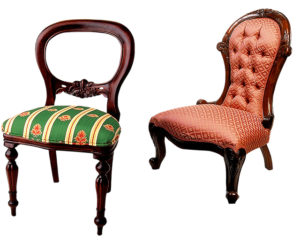 Bulacan is home to some 200 furniture manufacturers producing a wide range of world-class furniture. Catering to both foreign and domestic markets, they manufacture simple, classic, and reproduction furniture made of wood, rattan, metal, and mix of these materials. Their manpower is highly-skilled in fine and elaborate wood carvings, stone parquetry, and carabao bone in-laid furniture.
Bulacan is home to some 200 furniture manufacturers producing a wide range of world-class furniture. Catering to both foreign and domestic markets, they manufacture simple, classic, and reproduction furniture made of wood, rattan, metal, and mix of these materials. Their manpower is highly-skilled in fine and elaborate wood carvings, stone parquetry, and carabao bone in-laid furniture.
At present, Bulacan exports fine furniture primarily to Europe, Middle East, Korea, Taiwan, Mexico, and U.S. territories.
A local chapter of the Chamber of Furniture Industries of the Philippines (CFIP) provides assistance to the province's furniture manufacturers.
 Bulacan is a province suitable for the production of a wide variety of crops including fruits, vegetables, root crops, ornamentals and industrial crops. Unfortunately, most Bulakeño farmers seem to know and only want to plant rice (monocropping). Each year, our farmers continue to plant this crop despite their dwindling incomes. On the other hand, those few farmers growing (e.g. vegetables and other crops) practice traditional and conventional methods.
Bulacan is a province suitable for the production of a wide variety of crops including fruits, vegetables, root crops, ornamentals and industrial crops. Unfortunately, most Bulakeño farmers seem to know and only want to plant rice (monocropping). Each year, our farmers continue to plant this crop despite their dwindling incomes. On the other hand, those few farmers growing (e.g. vegetables and other crops) practice traditional and conventional methods.
To encourage rice farmers to shift and venture into the production of High Value Crops and expand their opportunities for increased incomes, the Provincial Agriculture Office (PAO) of Bulacan has reoriented its thrusts toward the provision of more assistance and support to high value crop farming, specifically vegetables and coffee.
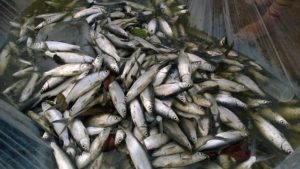 The aquaculture resources of Bulacan, aside from its fishponds, rivers, and tributaries, include Bustos-Angat Dam and waterlogged areas. It has a total of almost 888 hectares of freshwater fishponds and 15,059 hectares of brackish water fishponds. Major species cultured include bangus, tilapia, prawn, and catfish. Of the total aquaculture production which is 32,561 MT in 2000, bangus contributed 28,110 MT (86.3%) followed by tilapia at 4,071 MT. (12.5%). This made Bulacan a leading province in Bangus production based on reports of the Bureau of Agricultural Statistics (BAS).
The aquaculture resources of Bulacan, aside from its fishponds, rivers, and tributaries, include Bustos-Angat Dam and waterlogged areas. It has a total of almost 888 hectares of freshwater fishponds and 15,059 hectares of brackish water fishponds. Major species cultured include bangus, tilapia, prawn, and catfish. Of the total aquaculture production which is 32,561 MT in 2000, bangus contributed 28,110 MT (86.3%) followed by tilapia at 4,071 MT. (12.5%). This made Bulacan a leading province in Bangus production based on reports of the Bureau of Agricultural Statistics (BAS).
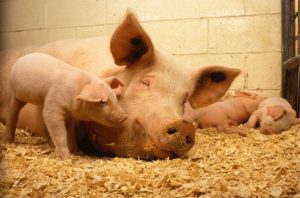 Bulacan has consistently been a major producer of meat products specifically pork and chicken. It has the biggest hog population in the country and supplies 60% of the pork requirement of Metro Manila. Statistics indicate that Bulacan's pork production is more than sufficient for local consumption that it can afford to move the product outside of the province to other markets. Broiler production is a major economic activity in the province
Bulacan has consistently been a major producer of meat products specifically pork and chicken. It has the biggest hog population in the country and supplies 60% of the pork requirement of Metro Manila. Statistics indicate that Bulacan's pork production is more than sufficient for local consumption that it can afford to move the product outside of the province to other markets. Broiler production is a major economic activity in the province

Brief History of Pyrotechnics
The word pyrotechnics refers to the art, craft, and science of fireworks. It is said that the birthplace of fireworks in China. Legend has it that Chinese cook accidentally mixed 3 common ingredients: potassium nitrate, sulfur and charcoal and which he lighted the mixture, a mass of colorful flames-burst forth. The cook also noticed that if the mixture was burned when enclosed in the hollow of a bamboo stalk, there was a tremendous explosion.
From China, fireworks moved on to the West through explorers. Stories have it that Marco Polo brought this new invention to the West from one of his many trips to China.
The first application of this technology was for entertainment. Slowly the theory took root. The loud sound was perfect for chasing away evil spirits and celebrating weddings, victories in battle or competition, eclipses and religious ceremonies. Movies that need explosion and bursting also use fireworks for the effect.
History of Pyrotechnics in the Philippines
In the Philippines, the pyrotechnics industry had its roots in Bulacan. It was Valentin Sta. Ana who first learned the craft of making fireworks from the parish priest of Santa Maria Town in 1867, Spanish Regime. It was said that the parish priest used kwitis or stick rockets to wake up parishioners for the start of Misa de Gallo Only specialists were allowed to manufacture, use and handle fireworks, but the priest taught Valentin the basics of fireworks making until he mastered the craft.
He passed on his skill to his children, Valerio, and Fernando Sta. Ana. In 1938, the Sta. Ana brothers opened the Santa Ana Fireworks Factory in Balasing Santa Maria, Bulacan. By 1941, they moved further East to Pulong Buhangin. After the war, the company broke up, and Valerio's brother Fernando put up his own company, Victory Fireworks, which continue to manufacture fireworks to this day. Mr. Fernando Sta. Ana is the one considered as the country's Father of Modern Fireworks and Pyrotechnics (1938).
Early fireworks factory owned by the Sta. Anas includes Universal Fireworks. Their workers also learned the technology fireworks making that gave birth to the mushrooming of factories in Santa Maria, Bocaue, Baliuag, Norzagaray and Angat.
Fireworks factories in Cavite and Laguna were in fact, originated from Bulacan For some time in 1966, fireworks and its industry was legalized in response to a tragedy that happened in Meycauayan City, Bulacan that killed 26 people. It was in Pyrotechnic the hope that similar tragedies might be prevented through close supervision by the government that the industry was legalized.
In 1972 when Martial Law was enforced and fear of using the technology of fireworks in rebellious activities against Marcos government, the fireworks industry was again made illegal. The industry then thrived underground and the manufacture of fireworks declined.
After seeing that Filipinos persisted in their use of fireworks for festivities and celebrations, the Republic Act 7183 - an act regulating the sale, distribution, and use of firecrackers and pyrotechnic devices and also known as Firecrackers Law was passed in 1992.
Bulacan is noted as a leading manufacturer of pyrotechnics in the Philippines. It is estimated that about 500 manufacturers are producing pyrotechnic products, particularly concentrated in the areas of Bocaue, Santa Maria, Baliuag, and other neighboring municipalities of the province. Some of them have already joined the Macau International Fireworks Display Competition.
Manufacturers and dealers grew rapidly in Bulacan relatively because of the high profits generated. It is important to note that the number of players in the industry varies with the season that usually dictates market conditions. Demand for pyrotechnics is closely related to the general economic health of the country. On average, May and December are peak months because of fiestas, Christmas, and New Year's Eve celebrations. It was observed that high economic growths result in higher demands for pyrotechnics during these months.
Towns that Host Most of the Pyrotechnic Enterprises
It is Santa Maria that hosts most of the pyro-manufacturing factory but Bocaue became the center of trade due to its strategic location.
Baliuag, San Rafael, San lldefonso, Norzagaray and Angat also host Pyrotechnic enterprises.
Product Lines
Aerial Fireworks - 3 to 12 inches in diameter shells good for occasions like New Year Celebrations, Fiestas, Weddings, Anniversaries, Jamborees, Coronations, Festivals
Bangers or firecrackers
Fountains, lucis or pailaw
Sky Rockets and parachutes
Waterfalls
Measures have been taken by the Pyrotechnic Board to Address the Needs of the Industry
Conduct of the first Pyrotechnics Technology Improvement Seminar (6 days) for Manufacturers, Dealers, and Regulators. The Provincial Government of Bulacan (PGB) commissioned experts from Canada and America in June 1999 who introduced the safe technology of making fireworks. The PGB spent P869,700.00 for the speakers alone.
Conduct of Training and Seminars on Proper Handling and Storage of Chemicals for manufacturers thru the Industrial Technology Development Institute (ITDI-DOST) and Occupational Safety and Health Center (OSCH-DOLE) Continuous training for manufacturers and dealers are being conducted thru the PPMDAI and PNP.
Research and study made by the ITDI on 3 types of bangers namely judas belt, El Diablo and Small Triangulo became the basis of the PNP to amend the Implementing Rules and Regulations of RA 7183 regarding chemical composition. This was also adopted in the product standardization of 3 bangers.
Passage of provincial ordinances on Policy and Standards in producing "lucis and bangers, product labeling, implementation of "no training, no license policy" and enforcement of regulation regarding the disposition of chemicals and explosive ingredients.
Implementation of Oplan: Ingat-Paputok thru production, posting and tv plugging
Campaign billboards
Posters on "Do's and Don'ts in Manufacturing Fireworks" in the workplace
Posters on Safe and Responsible Use of Fireworks
Posters on Illegal Firecrackers
Flyers "Ingat-Paputok, Iwas Disgrasya
Komiks on "Mga Dapat Malaman sa Paggawa ng Paputok
TV plug on Ingat-Paputok, Iwas Disgrasya
Creation of a Center (former BAPD) who receives and acts on complaints and requests from the industry.
Training Curriculum was already developed by the TESDA
Inspection and regulation of the workplace and retail stalls
Establishment of Pyrotechnic Mini-Library
Advocacy to change the Iwas-Paputok of DOH into Ingat-Paputok
Staging of Annual "Pasiklaban" to promote the industry and tourism
Organization of cooperative of small-scale pyrotechnic manufacturers
Conduct of For a and Dialogue
Conduct of Shooters Course for Aerial Fireworks Displayers to impart knowledge and skills, safety and security in the display of fireworks.
What Brought about the Creation of the Pyrotechnics Regulatory Board?
There were so many lives that had been taken already and the Provincial Government of Bulacan don't want to risk more by not attending and giving solutions.
There is a need to regulate and further improve the industry because fireworks have a great demand in the world market but we are behind China, the number one producer of quality fireworks, in terms of technology.
Because of recurring problems and issues that normally surfaced during months of September to December influx of smuggled imported finished fireworks, illegal manufacturers and illegal firecrackers, extortion, and accidental explosion.
There is a need to promote the industry. It was already legalized but some government agencies are campaigning to ban the use of pyrotechnics which is detrimental to the industry.
Many Bulakenyos are earning their living in the industry and if not attended, allied industries like chemical, paper and printing industry will also be affected.
For Inquiries:
Philippine Pyrotechnics Manufacturers and Dealers Association, Inc.
Address: Cagayan Valley Rd., Sta. Rita, Guiguinto, Bulacan 3015 Philippines
Lea Alapide (President)
Tel. Nos.: +63(44) 690-2239 / (+63977) 102-7799
Website: http://www.ppmdai.org
Bulacan Chamber of Commerce and Industry
Hiyas ng Bulacan Convention Center
Provincial Capitol Compound
City of Malolos, Bulacan, Philippines 3000
Cristina C. Tuzon (President)
Tel Nos.: +63(44) 662-1180, 791-2574
Mobile Nos.: (+63932) 849-8120, (+63932) 849-8122
Email: bcci@bulacanchamber.ph
Website: http://bulacanchamber.ph
 Garments is one of Bulacan's major industries with over 200 registered garment manufacturer engaged in direct export and sub-contracting work.
Garments is one of Bulacan's major industries with over 200 registered garment manufacturer engaged in direct export and sub-contracting work.
Its principal products range from children and infant's wear, knitted shirts and blouses, trousers, shorts, athletic and swim wear. Its highly-skilled Labor force excel in embroidery, handiwork and smocking, and competent workers knowledgeable in printing and dyeing, knitting and finishing.
 The leather crafting business in Bulacan shows particular promise for a line of bags and small leather accessory items. Waste leather scrapes from the export assembly manufacturers in the free trade zones have given rise to the production of ingeniously fashioned new items by local tailors.
The leather crafting business in Bulacan shows particular promise for a line of bags and small leather accessory items. Waste leather scrapes from the export assembly manufacturers in the free trade zones have given rise to the production of ingeniously fashioned new items by local tailors.
Through the assistance of the DTI Department of Trade and Industry and Bulacan Chamber of Commerce and Industry, they have been able to extend their marketing efforts by participating in trade fairs and special exhibitions at malls in and around Manila. The Design Center of the Philippines has developed several new shoes and bags designs, which will be executed for the fair.
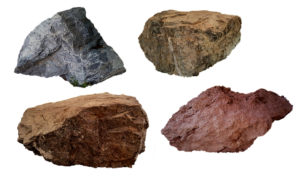 I. Overview
I. Overview
History of the Industry
During the last century, travelers had already made reference to marble and stone in the Philippines Sir John Bowring in 1859 once commented: "Finely variegated marbles exist in the province of Bulacan, and some have been used for ornamenting the churches but their existence has excited little attention.. . ". He also said: " On the Quingua from Baliuag up to its stream, we passed several quarries where we saw the thickly packed strata of volcanic stone which is used as a building material."
Spanish "conquistadores" utilized Romblon marble in churches for the altar, fonts, flooring and the like six holy-water fonts in San Sebastian Church, Manila bear an inscription showing their Romblon provenance. Philippine marble became synonymous with Romblon, at least for local uses. However, during the last century, stone architecture had not been fully developed in the Philippines.
The first impetus given to local marble exploitation was after World War II when memorial stones were required by the Rattle Monuments Commission This was followed hv the development of the Antipolo-Teresa deposits with its proximity to the main market, Manila and the establishment of the cement industry in Bulacan which led to the opening of the marble quarries in the area In the last decade, mineral exploration gained momentum and the presence of marble deposits were reported from a number of areas.
Mai hie was first exported in 1061 \o Guam and Hong Kong. Presently, most of our marble exports arc in the form of worked marble, specifically marble slabs and tiles (polished, semi-polished or unpolished) The rest arc unworked marble in the form of blocks marble chips, dust or powder and marble novelties.
Product Description
Marble is a metamorphosed limestone found in many localities in thick and extensive beds. It is a crystalline rock composed of grains of calcite, or more rarely, dolomite. It may be specifically described as a re-crystallized calcareous rock with a high or low degree of impurities Some deposits of marble are composed entirely of silica and silicate materials, iron oxide, and sulfide minerals and organic matter. The individual grains may be so small that they cannot be distinguished by the eye. or maybe coarse and show clearly the characteristic calcite cleavage Marble is generally tougher than most limestone as the grains of calcite in the latter are usually less firmly cemented Like limestone, marble is characterized by its softness and its effervescence with acids. When pure, marble is white in color but it may show a wide range of colors due to various impurities that it contains Iron oxide may impart colors of tan, red or brown. Carbonaceous matter causes a gray to black color
Simply stated, marble is any calcareous rock produced by nature that is capable of taking a good polish Thus, commercial marble includes some limestone.
Product Classification
The Philippine marble stones are classified under the following categories:
 |
 |
 |
||||||||||||||
 |
|
 |
||||||||||||||
 |
 |
 |
Product Substitutes
Several materials that have common uses similar to those of marble tiles and slabs include granolithic, vinyl, ceramic and cement tiles, mactan stones and the like and parquet.
Comparative prices of other construction materials vis-a-vis the marble tiles reveal that granolithic and ceramic tiles are more expensive than the commonly-bought marble varieties (Bulacan and Romblon marble). Parquet flooring and vinyl tiles meanwhile are valued at much lower prices than marble while cement tiles and mactan stones are sold at about the same rate as the ordinary marble. Generally speaking, marble, per se, can be less expensive than the other construction materials, However, the cost of installation makes it appear to be the most expensive
Perhaps the real competitor of marble is marble itself Depending on variety, availability, and usage, one could easily substitute a certain marble type for another of a similar color.
Product Standards
Marble is a product of nature and is not always subject to the standards of uniformity and consistency that apply to manufactured building materials.
For the selection of marble for a particular construction, two groups of properties are important: the functional and aesthetic qualities. The functional properties refer to the qualities of marble that determine its structural soundness. These properties include hardness, elasticity (in relation to the amount of pressure the marble could withstand without buckling) and porosity. Porosity becomes especially significant in damp climates because the absorption of water drives out the minerals in the stone and can be lead to unattractive discoloration.
Marble Deposits
A raw estimate of Philippine marble ore reserves indicates the presence of 6.7 Billion tons of marble and limestone deposit. Out of the 17 provinces where marble may be found, active quarry operations have mainly centered in Bulacan for the past 25 years. About 70% of marble blocks used as raw materials by industrial marble exporters all over the country arc sourced mainly in Bulacan, either from Meycauayan City, San lldefonso, San Rafael, Dona Remedios Trinidad, San Miguel, Norzagaray and San Jose del Monte City. These areas have been proven to be a good source of deposits with famous colors such as tea rose and the capistrano beige.
A total number of 80 deposits were identified and inventoried under the geological survey component of the EC-sponsored project for the marble industry. The highest concentration of good deposits was found in Bulacan and Romblon.
Marble Exports and Performance
Philippine marble export is classified as worked and unworked. The ratio of volume between these 2 categories is 4:1 in favor of unworked.
Worked marble includes tiles, slabs, countertops, other special works and novelty items Unworked marble covers blocks, granules, and chips.
The industry showed a strong export growth in 1986-90 with an average rate of 24%. It registered negative growth from 1992 onwards with -12%, -8.21% and -1% respectively. These industry "temporary" setbacks were caused by the transition period of devolution of permits due to implementation of Local Government Code and the proclamation/declaration establishing the Biak-na Bato area as National Park and Mineral Reservation in April 1989.
In terms of volume, Philippine exports of marble grew by 37% from 56,618 MT in 1994 to 77,694 MT in 1995.
II. Prospects Of The Industry
In 1993, the DTI has developed the Medium Term-Philippine Export Development Plan (MT-PEDP). The five-year plan contains detailed strategies for enhancing export growth. Through market diversification, further tariff liberalization, improved infrastructure, product development, and stable macroeconomic policies, the Government intends to achieve export growth rates of more than 18% annually in this period.
Under this plan, fourteen "export winners" were chosen from among 154 promotable products on the basis of these criteria: high worldwide potential, less sensitivity to protectionist measures of importing countries and minimum requirements for efficient infrastructure, production capability and high skilled labor.
Marble has been identified as one of the 14 export winners. As such, it is expected to contribute significantly to achieving the country's target of US $ 28B by 1998, to account for 30.4% of GNP.
To realize this goal, the government has paved the way toward a conducive export environment by providing integrated support mechanisms that will address major concerns of the industry. This support mechanism should help fast-track and sustain export growth and enable the export winners, such as Marble, to achieve specific targets Assistance is provided to high growth potential export products that have shown sustained growth. The marble industry's target by 1998 is US $ 80M, growing at a projected rate of 50% per annum.
The prospects for the marble industry had always been bright and rosy. Philippine share in world market is projected to increase from 1% in 1992 to 4.5% in 1998 and export earnings from US$10M in 1992 to US$ 150 M by 1998.
Total production is expected to increase from 300,000MT in 1993 to 450,000 MT in 1998 or 50% increase.
Competitive Advantage
- Quality and color of marble
- Finish
- The hardness of the stone
For more information about the industry, please contact the following:
Concerned Provincial Government Office
Provincial Cooperative and Economic Development Office (PCEDO)
Bulacan Trade and Business Assistance Center
Provincial Capitol Compound, Guinhawa
City of Malolos, Bulacan 3000 Philippines
Atty. Jayric L. Amil, Department Head (OIC)
Tel. No: +63(44) 812-8877 / +63 (44) 791-8157 to 58
Email: pcedo@bulacan.gov.ph
Business Organizations
Bulacan Chamber of Commerce and Industry
Hiyas ng Bulacan Convention Center
Provincial Capitol Compound
City of Malolos, Bulacan, Philippines 3000
Cristina C. Tuzon (President)
Tel No. +63(44) 662-1180, 791-2574
Mobile Nos.: (+63932) 849-8120, (+63932) 849-8122
Email: bcci@bulacanchamber.ph
Website: http://bulacanchamber.ph
Major Business Establishments
C & B Marble Corporation
7 Maginao, San Rafael, Bulacan 3008 Philippines
Contact Person: Benjamin B. Isidro
Tel. Nos.: +63(2) 552-5555, +63(44)815-2222, +63(44)893-1075
Mobile No. +63(918) 911-4181 or +63(922) 800-5611
Email Address: cbmarble@mozcom.com, benjaminisidro@yahoo.com
Marble Association of the Phils., Multi-Purpose Coop.(MAP-MPC)
TESDA Cmpd., Tabang, Guiguinto, Bulacan 3015 Philippines
Contact: Mr. Ernesto J.P. Patanao, General Manager
Tel. Nos.: +63(44) 794-2947, 690-0061, +63(2) 725-2933
